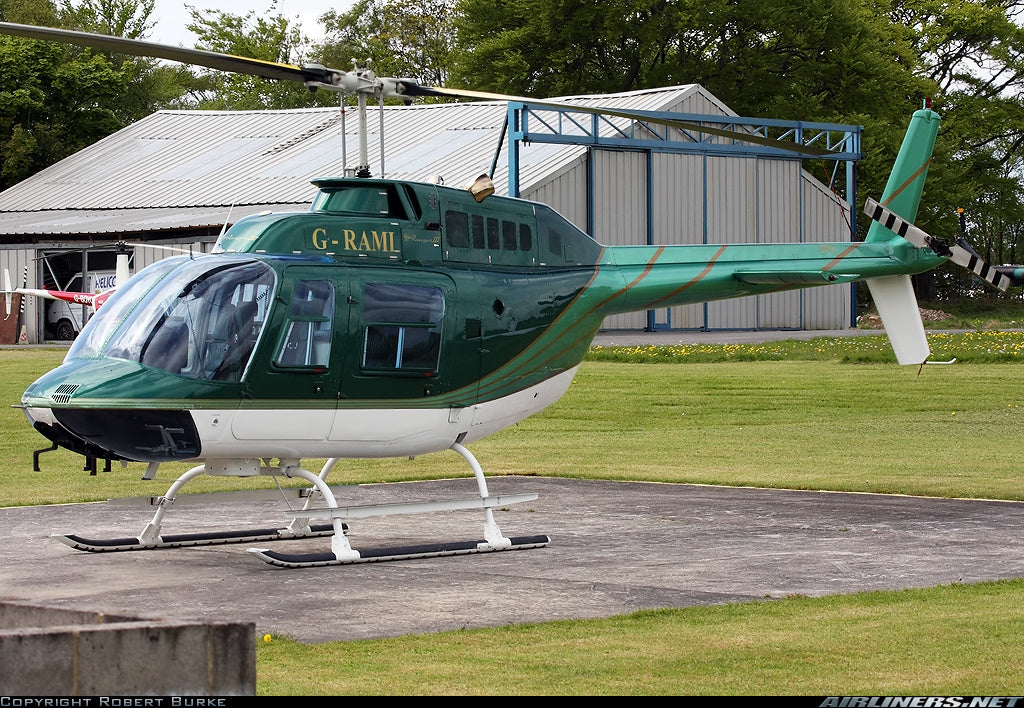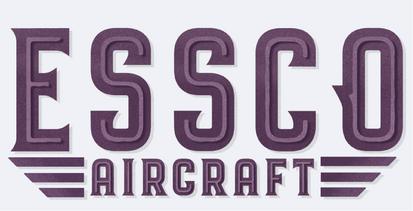
Number 46 of 100 in 100, the Bell 206 JetRanger 🚁
Conceptualization:
The Bell 206 was conceptualized in response to the U.S. Army’s need for a light observation helicopter in the 1960s, which resulted in Bell’s initial YOH-4 design. While the YOH-4 did not win the Army contract, Bell recognized a gap in the civilian market for a light, versatile helicopter that could meet corporate, private, and utility needs. This led to the creation of the Bell 206 JetRanger, which became popular due to its reliability, cost-effectiveness, and ease of operation. The growing demand for multi-role helicopters in both civilian and military sectors, combined with Bell’s reputation for producing durable aircraft, helped solidify the Bell 206’s place in aviation history.
Original Design:
The original design of the Bell 206 emphasized simplicity, functionality, and aesthetic appeal. It featured a two-blade semi-rigid rotor system, with a powerful and reliable Allison 250-C18 turbine engine, and a streamlined fuselage that improved both performance and passenger comfort. The helicopter could seat five people in its spacious cabin, making it ideal for corporate transport, training, and utility missions. Skid-type landing gear enhanced its ruggedness for landing on uneven terrain, while the large glass canopy offered excellent visibility for pilots.

Photo Credit: airliners.net - Craig Murray
Principal Designer:
The design of the original Bell 206 was a collaborative effort led by the engineering team at Bell Helicopter. With a rich background in rotorcraft design, the team had previously worked on the Bell 47, one of the first commercially successful helicopters. The team drew upon Bell’s experience developing the UH-1 Huey for the military, ensuring the Bell 206 would meet the demands of both civilian and military markets. The design philosophy behind the Bell 206 later influenced other Bell models, including the Bell 407, which integrated features from the 206L variant.
Production Run:
The Bell 206 was first produced in 1967, with the JetRanger marking its initial entry into the market. Over the course of its production run, which lasted until 2017 for the LongRanger variant, Bell manufactured 7,300 units. The JetRanger and its variants became widely popular in civilian, military, and law enforcement applications during the 1980s and 1990s. Over time, newer helicopter models and technological advancements led to a gradual decline in production, with the final units being delivered in the late 2010s.
Evolution:
The Bell 206 evolved significantly during its production, with major upgrades including the introduction of the JetRanger II and JetRanger III, which featured more powerful Allison 250-C20 engines and improved rotor systems. The 206L LongRanger variant extended the cabin to accommodate up to seven passengers, making it suitable for larger transport needs and utility work. Additionally, the Bell 206 was adapted for military use as the OH-58 Kiowa, a reconnaissance and light attack helicopter that saw extensive service. Each variant offered improved performance, enhanced safety features, and greater versatility to meet the changing needs of operators.

Photo Credit: airliners.net - Bill Campbell
Specifications:
General characteristics
Bell 206A JetRanger
- Crew: 1
- Capacity: 4 passengers
- Length: 38 ft 9.5 in (11.824 m) including rotors
- Fuselage length: 28 ft 8.25 in (8.74 m)
- Height: 9 ft 4 in (2.84 m)
- Empty weight: 1,295 lb (587 kg)
- Max takeoff weight: 2,900 lb (1,315 kg)
- Powerplant: 1 × Allison 250-C18 turboshaft engine, 317 shp (236 kW)
- Main rotor diameter: 33 ft 4 in (10.16 m)
- Main rotor area: 873 sq ft (81.1 m2)
Performance
- Maximum speed: 130 kn (150 mph, 240 km/h) at MTOW
- Cruise speed: 122 kn (140 mph, 226 km/h) at MTOW
- Range: 425 nmi (489 mi, 787 km) at MTOW, 5,000 feet, cruise speed
- Service ceiling: 20,000 ft (6,100 m) at MTOW
- Rate of climb: 1,350 ft/min (6.9 m/s)
- Disk loading: 4 lb/sq ft (20 kg/m2)
- Power/mass: 0.09 hp/lb (0.15 kW/kg)
Comparison to Other Aircraft in Its Class:
The Bell 206 JetRanger compares well to other helicopters in its class, offering a balance of performance, capacity, and cost-effectiveness. The Robinson R66, powered by a Rolls-Royce RR300 turboshaft engine, has slightly less power and range but is a lighter, more affordable option for personal and utility use. The MD Helicopters MD 500E offers comparable speed and performance to the Bell 206 but has a smaller range and is more commonly used for precision tasks like law enforcement. Lastly, the Schweizer S-333, a smaller and less powerful helicopter, is more suited for training or lighter utility tasks. Overall, the Bell 206 remains a strong contender due to its reliability, versatility, and lower operating costs, making it ideal for roles like corporate transport, air ambulance, and law enforcement.
Performance:
V-Speeds (Important for Pilots):
- V_NE (Never Exceed Speed): 130 knots (150 mph, 241 km/h)
- V_H (Maximum Continuous Speed): 115 knots (132 mph, 213 km/h)
- V_CR (Cruise Speed): 122 kn (140 mph, 226 km/h)
- V_HO (Hover Out of Ground Effect): Varies with altitude and weight:
- At sea level: Approx. 4,000 lbs max gross weight = hover at 8,000 ft.
- V_HIGE (Hover In Ground Effect): 12,000 ft at maximum gross weight (approx.)
G Load Limitations:
- Positive G-Load: +2.5G (Normal operating conditions)
- Negative G-Load: 0.0G (Bell 206 is not designed for negative-G maneuvers)
Performance Assessment:
The Bell 206's stable and predictable handling, combined with its responsive controls, makes it an excellent training platform for new pilots. Its semi-rigid rotor system is easy to manage, and its low G-load limitations ensure operations stay within safe, predictable parameters. The helicopter excels in crucial training maneuvers such as hovering and autorotations, offering smooth transitions and stability during emergency procedure training. Additionally, its ability to perform sideward and rearward flight is ideal for confined space operations, giving trainees the skills they need for landing in tight urban or remote areas. For personal aviation, the Bell 206 stands out for its simplicity of operation, featuring straightforward controls and systems that are easy for private owners to manage. While capable of IFR operations, many personal users prefer its VFR capabilities, as the large glass canopy offers excellent visibility for visual navigation. The fuel-efficient Allison 250-C20J engine helps keep operating costs manageable, making the Bell 206 an ideal choice for both personal and training roles, offering a balance of power, reliability, and ease of use.

Photo Credit: airliners.net - Colin Hollywood
Safety Record:
The Bell 206 boasts a favorable safety record, although there are some notable challenges. Its low-inertia rotor requires quick action during autorotations, and the helicopter is somewhat prone to dynamic rollover in certain conditions, as are many skid-equipped helicopters. Tail rotor strikes in confined spaces have also been a concern. Despite these challenges, most incidents have been attributed to operational errors rather than design flaws. Compared to other light helicopters like the Robinson R66 or MD 500E, the Bell 206 has a strong safety reputation, particularly when flown by experienced pilots and maintained according to standard procedures.
Acquisition Cost:
The original acquisition cost of the Bell 206 in the late 1960s ranged from $100,000 to $150,000, making it an affordable option for civilian and corporate users. Today, the price of a used Bell 206 varies depending on its condition, with well-maintained models typically priced between $600,000 and $1 million. Compared to newer models, the Bell 206 remains a cost-effective choice for operators looking for a reliable, versatile light helicopter.
Conclusion:
The Bell 206 JetRanger remains one of the most successful and versatile helicopters ever produced. Its adaptability, reliable performance, and reasonable operating costs have made it a favorite in a wide range of sectors, from law enforcement to private aviation. The aircraft’s design evolution over four decades ensured it stayed competitive, while its strong safety record and ease of operation made it a go-to option for pilots and operators worldwide. For those seeking a helicopter that offers a blend of reliability, performance, and cost-efficiency, the Bell 206 remains a timeless choice.

Photo Credit: airliners.net - Brian Spurr
Bibliography:
Federal Aviation Administration (FAA)
Aero Corner – Bell 206 JetRanger
Essco Links:
